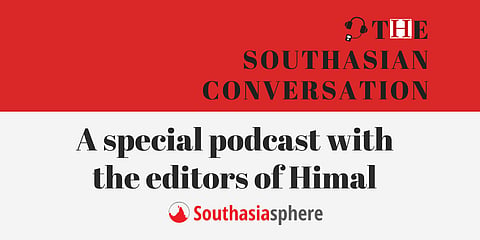Podcast
A special podcast with the editors of Himal
In this special podcast, the editors of Himal mark the release of ten issues of Southasiasphere, our fortnightly newsletter, and take stock of some of the major events that shaped the region over the last several months. From militarisation of our democracies to growing Islamophobia, and from the emerging economic crisis to the plight of workers – all under the shadow of COVID-19 pandemic – we analyse what transpired in Southasia in the first six months of 2020, and talk about some key dates in the weeks and months ahead.

